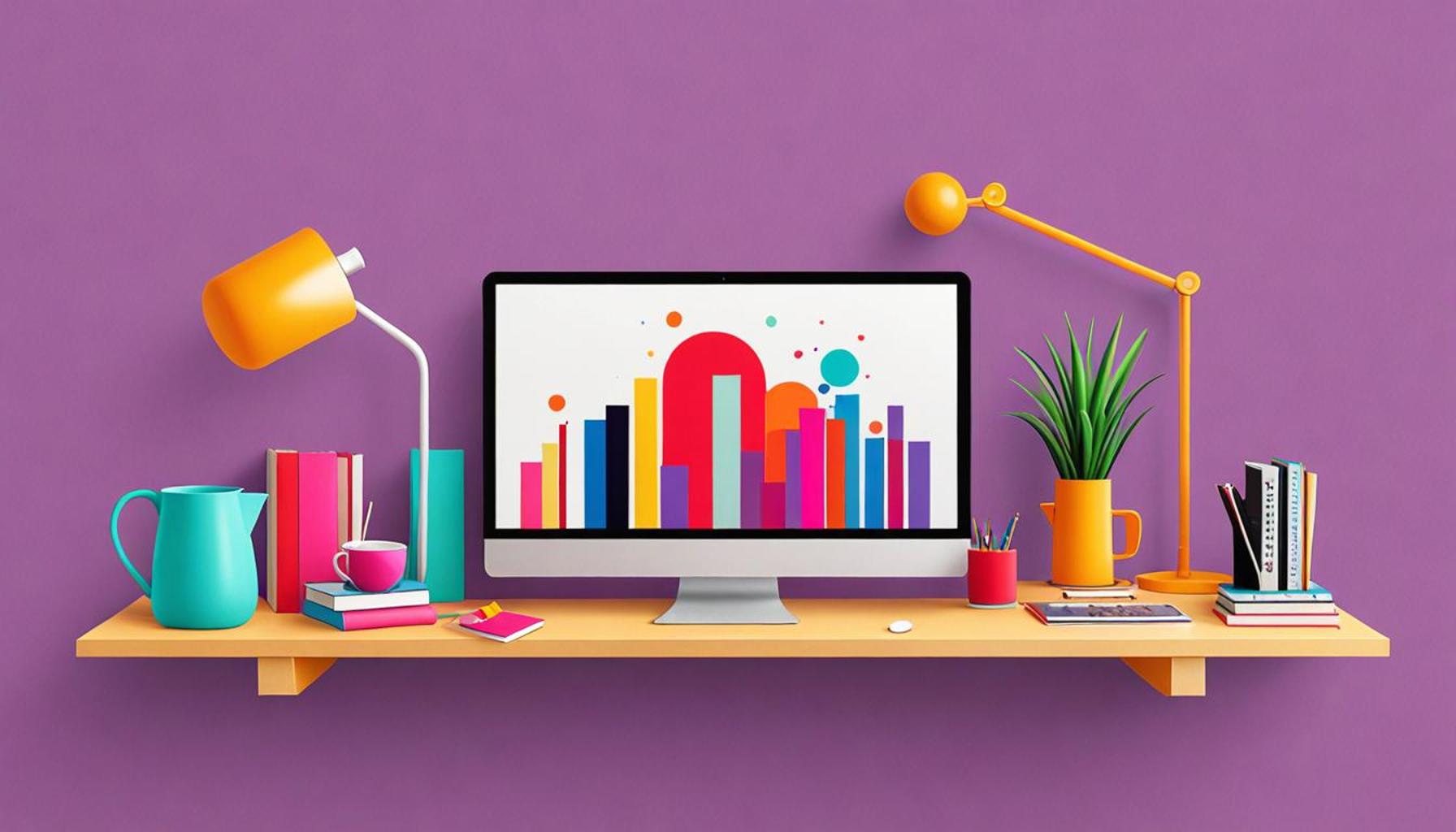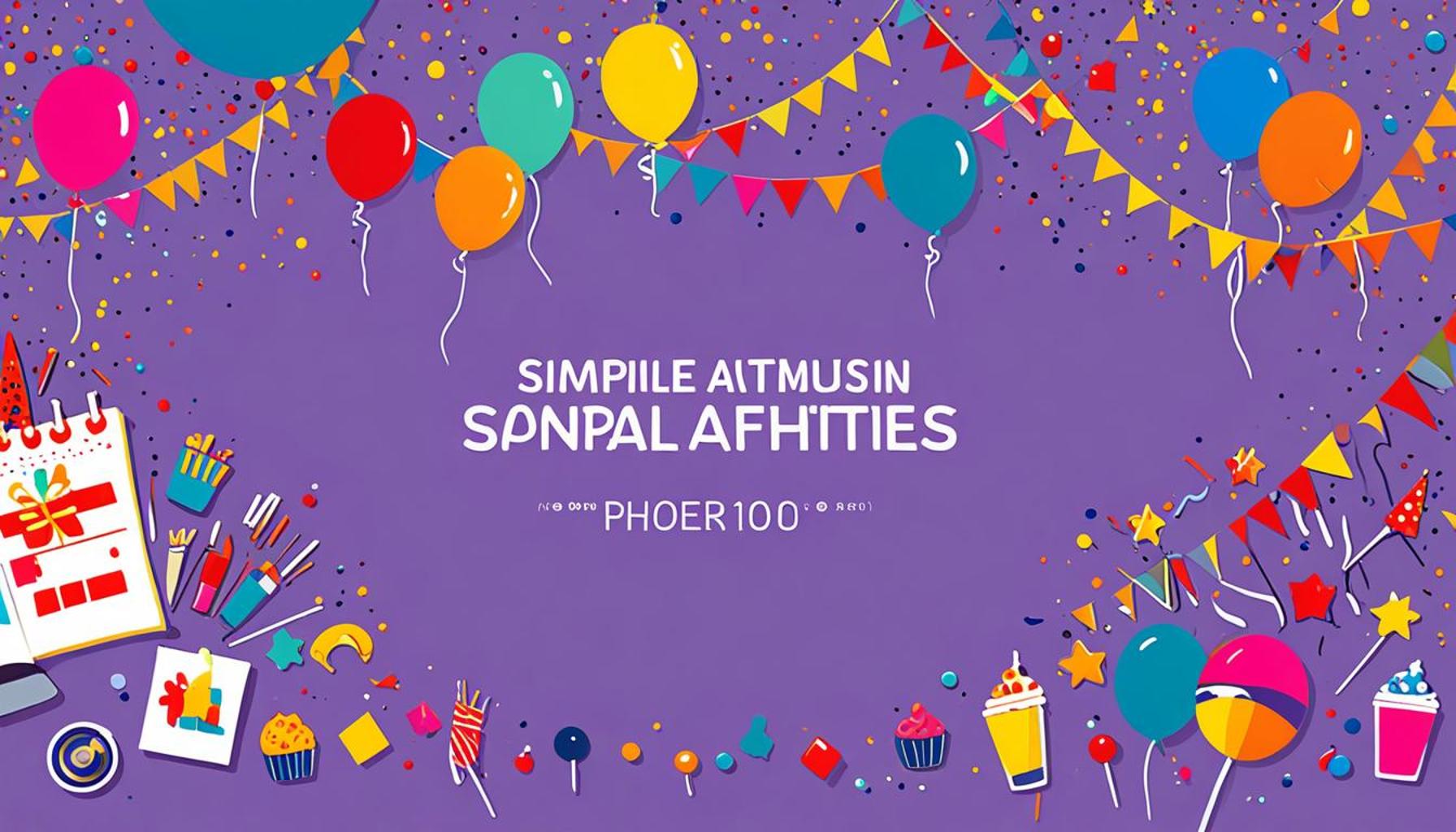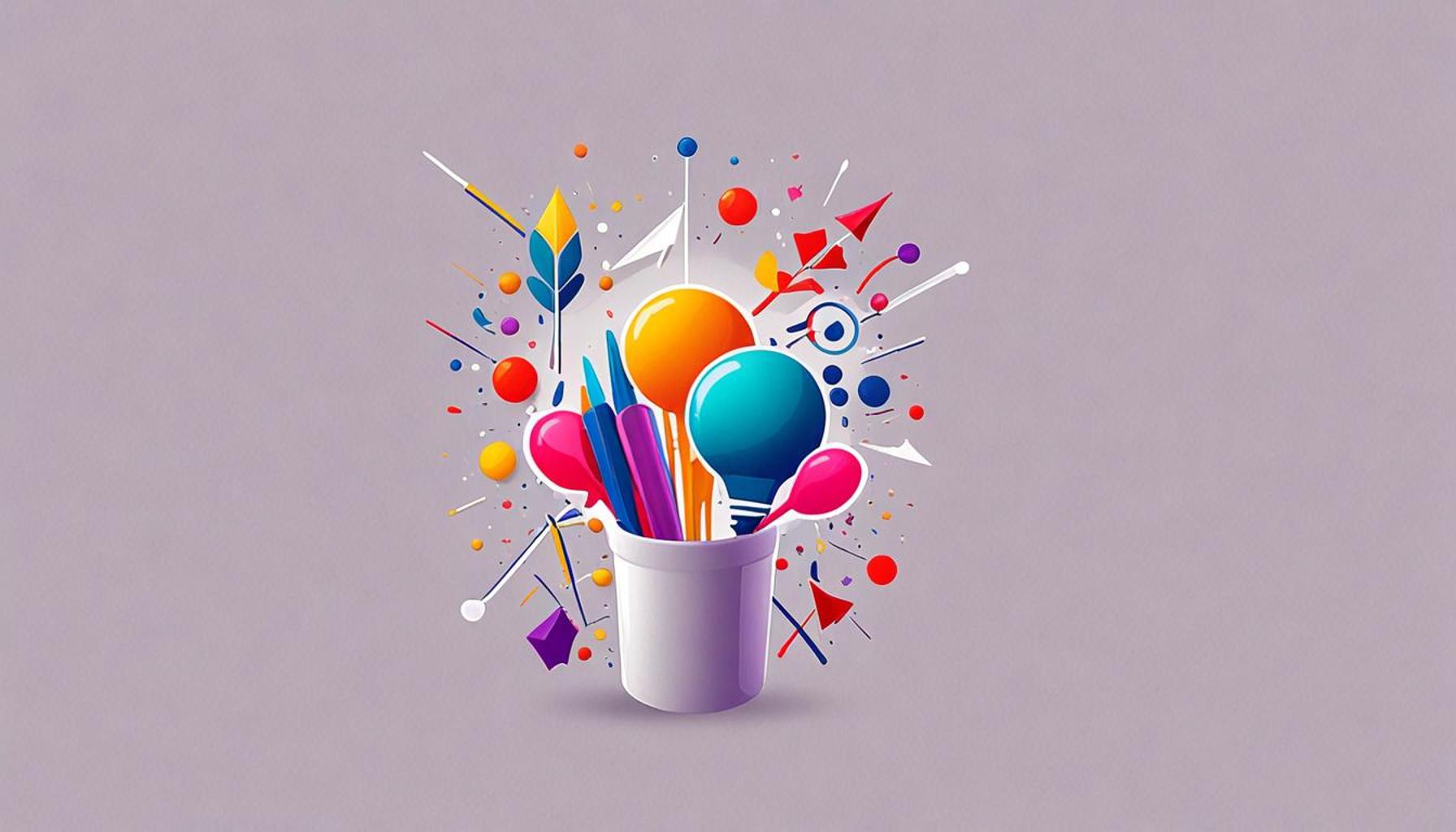Digital Minimalism: How to Simplify Your Online Life and Increase Productivity

The Case for a Simplified Digital Existence
In a society increasingly driven by technology, the lines between our personal and digital lives often blur. The incessant notifications, never-ending emails, and relentless social media updates can create a whirlwind of overstimulation. People frequently find themselves lost in a cycle of checking their phones, leading to a state often described as digital fatigue. This phenomenon can diminish our focus and hinder our ability to engage with the deeper, more meaningful aspects of life.
Digital minimalism serves as a counterbalance to this chaotic environment, advocating for an intentional and simplified approach to our online engagement. By examining our digital habits critically, we can prioritize activities that genuinely enhance our lives while eliminating distractions that consume our time and energy.
Core Principles of Digital Minimalism
To truly embrace digital minimalism, it’s essential to understand its cornerstone principles:
- Intentionality: This principle encourages individuals to focus on technology that adds real value to their lives. For instance, instead of mindlessly scrolling through social media feeds, one might choose to engage with professional networking platforms like LinkedIn that foster career growth and development.
- Mindfulness: Being aware of how and when we engage with our devices can significantly impact our mental well-being. This could mean designating specific times each day to check emails or setting app limits to minimize impulse usage.
- Community: Despite the allure of digital connections, fostering offline relationships is crucial for mental health. Engaging in community events, joining local clubs, or simply spending time with family can enrich our lives beyond what any screen can offer.
Embracing digital minimalism can lead to a remarkable transformation. Many practitioners report not only reclaiming precious hours but also experiencing enhanced mental clarity, reduced stress, and improved relationships. In fact, a study conducted by the University of Pennsylvania concluded that limiting social media use to just 30 minutes a day can significantly decrease feelings of loneliness and depression. The results highlight the importance of reducing online noise to improve overall well-being.
In the sections that follow, we will delve into actionable steps that can help you simplify your online world effectively. With strategies and insights tailored to fit the needs of a busy lifestyle, you will learn how to harness the full potential of your digital tools while maintaining a more focused and fulfilling existence. Are you prepared to explore this transformative journey towards a more intentional and productive online life?

DISCOVER MORE: Click here to learn about emotional detachment for a clutter-free space
Identifying Digital Clutter
As we embark on the journey towards digital minimalism, the first practical step is to identify and confront the sources of our digital clutter. This clutter can take many forms, from the myriad of applications installed on our devices to the multitude of tabs that accumulate in our web browsers. Recognizing these distractions is vital in reclaiming our time and focus.
Begin by taking inventory of your digital space. Here are some questions to consider:
- What applications do you use daily? Evaluate whether each application serves a purpose in your life or if it simply drains your attention.
- Which notifications are essential? Sorting your notifications into categories—important, useful, and unnecessary—can help you streamline communication.
- How many social media accounts do you actively engage with? Consider deactivating accounts that don’t contribute positively to your life and focusing more on platforms that foster personal and professional growth.
In the United States, the prevalence of social media is staggering. According to a report from the Pew Research Center, as of 2021, 69% of Americans use at least one social media platform. While these platforms can provide connection and entertainment, they can also lead to feelings of inadequacy and distraction when not used mindfully. The average American spends over two hours on social media daily, time that could be redirected towards personal projects, family time, or self-improvement initiatives.
Once you have assessed your digital landscape, it’s essential to take actionable steps to deliberate on what remains. For many, this involves purging unnecessary apps and programs, turning off non-essential notifications, and setting limits on usage. Digital minimalism encourages a less is more philosophy; by surrounding ourselves with only the tools that genuinely uplift and serve us, we can create an environment conducive to productivity and inner peace.
Moreover, implementing a more structured approach to your online interactions can assist in diminishing the pressures of constant connectivity. For instance, the Pomodoro Technique, which involves working in focused bursts followed by short breaks, can be a great method to maintain productivity while managing digital distractions. By incorporating short breaks away from screens, individuals can rejuvenate their minds, resulting in increased creativity and focus.
The crux of digital minimalism lies in making conscious choices that align with our values and objectives. As you undertake the task of eliminating excess and establishing boundaries, you not only create a cleaner digital environment but also cultivate a deeper appreciation for technology’s role in your life. In the next sections, we will explore practical strategies to maintain these newfound digital habits, allowing for a lifestyle that not only emphasizes productivity but also fosters mental clarity and personal growth.
| Advantage | Description |
|---|---|
| Enhanced Focus | Reducing digital clutter drives improved attention, aiding in deep work. |
| Time Management | Prioritizing online tasks leads to more discretionary time and better productivity. |
Digital minimalism is not merely about limiting your online presence; it’s a strategic approach to boost your daily efficiency. One of the key advantages of adopting digital minimalism is its focus on enhanced focus. By streamlining your digital interactions, distractions diminish significantly, allowing you to engage in deeper work that fosters creativity and critical thinking. This is vital in a world overflowing with information, where maintaining concentration becomes increasingly challenging. Furthermore, digital minimalism can transform your time management practices. With a clear framework for what online activities hold value, you can smartly navigate your day-to-day tasks. When online tasks are prioritized, individuals often find themselves reclaiming hours, thus cultivating a disciplined routine that ultimately leads to greater productivity. Such proactive maintenance of one’s digital life is essential in a culture that thrives on engagement, often at the cost of personal time and mental well-being. Embracing these principles of digital minimalism empowers individuals to craft an online life that is not only simpler but exceptionally rewarding.
DIVE DEEPER: Click here to discover how to involve your family in creating a clutter-free home</
Establishing Mindful Digital Practices
Once you have recognized the sources of digital clutter, the next step towards embracing digital minimalism involves establishing mindful digital practices. This phase is crucial for ensuring that your online engagements enhance rather than detract from your productivity and overall well-being.
One of the key strategies is to implement a detailed time management system that prioritizes your most important tasks. Apps that promote focus, like Todoist, Trello, or Notion, can help you track your tasks and maintain a clear overview of your priorities. The 80/20 rule, or the Pareto Principle, posits that 80% of our results come from 20% of our efforts. By identifying those vital 20% of tasks, you’re better equipped to allocate your time wisely and eliminate the noise that often leads to overwhelm.
In addition to task management, setting strict time limits on your digital activities can be effective. For instance, designate specific time slots for checking emails or engaging with social media, and use tools like StayFocusd or Freedom to restrict access outside of these periods. Research conducted by the American Psychological Association emphasizes that multitasking, typical in our digital-heavy lives, can actually hamper productivity, costing the average worker approximately 2.1 hours of productivity each day. By reducing the tendency to juggle multiple tasks, you create a more focused and efficient workflow.
Creating a Balanced Tech Environment
Another practical step is to create a balanced tech environment. This involves not only decluttering your digital devices but also making intentional choices about where and how you engage with technology. Aim to create a workspace that is free from unnecessary screens and distractions. The position of your devices can significantly impact your concentration levels—factoring in things like distance and glare can make a difference in efficiency.
Consider the power of physical breaks away from technology. Research shows that taking a walk or engaging in physical exercise can help refresh your mind and improve cognitive function. Incorporating regular moments of unplugging into your daily routine can significantly enhance your productivity levels in the long term. Organizations like the American Institute of Stress highlight the importance of walking breaks in alleviating mental fatigue—especially for those who work in predominantly digital environments.
Furthermore, fostering digital communication boundaries is essential. Make it a habit to mute notifications during specific hours to eliminate interruptions during focused work sessions or family times. By establishing clear boundaries around your responsiveness to digital communications, you maintain control over your time and priorities.
Another important aspect is to leverage technology intentionally. Look for tools that serve a specific purpose and enhance your personal or professional endeavors. For instance, platforms such as Slack can streamline communication in a work environment, while Google Drive can enhance collaboration without overwhelming users with unnecessary features. Research by Doodle indicates that poorly managed meeting times can cost companies millions in lost productivity—thus selecting the right tools and using them effectively can indeed make a significant impact.
Engaging in regular digital detoxes—periods where you intentionally disconnect from your devices—can also be beneficial. Whether it’s a day each week or a specific time during your day, dedicating moments to unplug can refresh your mind and cultivate a deeper appreciation for technology’s role. In a study on psychological benefits of a digital detox, participants reported reduced anxiety and improved mental clarity, fostering ideas that can rejuvenate both personal creativity and productivity.
DIVE DEEPER: Click here to discover how a clutter-free life can change your perspective
Embracing Digital Minimalism for a Productive Future
In a world increasingly dominated by digital distractions, embracing digital minimalism can be a transformative strategy for enhancing productivity and well-being. As we’ve explored, the journey begins with identifying and addressing digital clutter, allowing for more focused and intentional online engagement. By implementing mindful practices such as detailed time management and setting strict limits on digital activities, we position ourselves to reclaim valuable hours that can be redirected towards our most impactful tasks.
The creation of a balanced tech environment is equally critical; it fosters clarity and concentration, while scheduled breaks from screens provide essential mental refreshment. This approach not only supports productivity but also nurtures creativity and reduces anxiety, leading to improved mental health. Furthermore, establishing digital communication boundaries allows for deeper focus on tasks at hand, preventing unnecessary interruptions from notifications and messages.
Ultimately, digital detoxes serve as important tools to reconnect with our offline lives and appreciate the role that technology plays in our daily routines. By adopting these practices, individuals can experience rapid improvements in their productivity and overall quality of life. As we navigate the complexities of modern technology, prioritizing intentional engagement will empower us to live more fulfilling lives, enabling us to work smarter, not harder.
Embarking on a journey towards digital minimalism is not merely about reducing our digital footprint; it’s about cultivating a lifestyle where technology serves us rather than controls us. The challenge lies in making conscious choices, fostering habits that maximize our productivity, and ensuring that our digital environments reflect our values and priorities. Step into this transformative journey and discover the potential waiting in a simplified online life.


